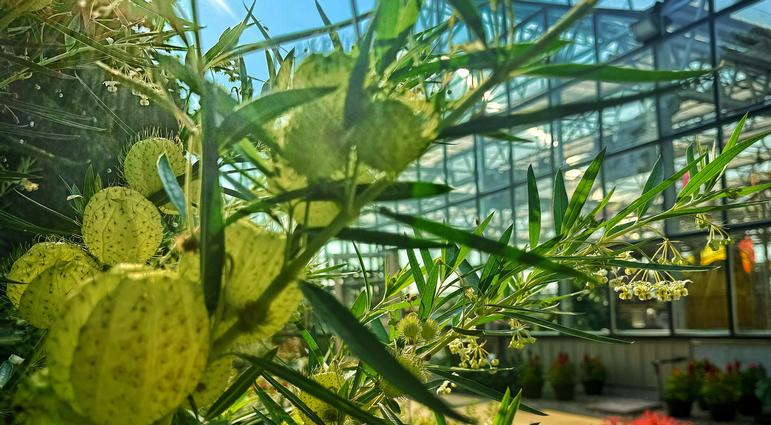Hairy Balls Milkweed

When it comes to unique plants that captivate both gardeners and pollinators alike, the hairy balls milkweed (Gomphocarpus physocarpus) stands out as an extraordinary specimen. Also known as the balloon plant or swan plant, this intriguing milkweed is a delightful addition to any garden, offering both aesthetic appeal and ecological benefits.
Aesthetic Appeal: The Unmistakable Seed Pods
The hairy balls milkweed gets its whimsical name from its most distinguishing feature: the round, balloon-like seed pods that are covered with soft, hair-like spines. These curious pods can reach the size of a small lime and are often the first thing that catches the eye in the garden. Their unusual appearance adds a touch of eccentricity to your garden, making them a great conversation piece for visitors.
But the beauty of this plant doesn’t end with its seed pods. The hairy balls milkweed also produces clusters of small, star-shaped white or pale green flowers. These blooms, while subtle, are delicate and fragrant, attracting a host of pollinators to your garden.
Ecological Importance: A Lifeline for Monarch Butterflies
One of the most important roles that the hairy balls milkweed plays is as a host plant for monarch butterflies. Like other species of milkweed, it serves as a crucial food source for monarch caterpillars. The leaves of the plant provide nourishment for these caterpillars, helping them grow and eventually transform into the iconic orange and black butterflies.
In addition to supporting monarchs, the hairy balls milkweed is a magnet for other pollinators, including bees and beneficial insects. By planting this milkweed, you’re contributing to the conservation of these vital species, many of which are currently under threat due to habitat loss and pesticide use.
Growing Hairy Balls Milkweed: Tips for Success
If you’re considering adding the hairy balls milkweed to your garden, you’re in for a treat. This plant is relatively easy to grow and care for, making it suitable for gardeners of all levels.
-
Sunlight and Soil: The hairy balls milkweed thrives in full sun and well-drained soil. It’s adaptable to different soil types, but for best results, plant it in a location that receives plenty of sunlight throughout the day.
-
Watering: This milkweed prefers regular watering, especially during its initial growth phase. Once established, it becomes more drought-tolerant, but consistent moisture will ensure optimal growth and flowering.
-
Maintenance: The plant can grow quite tall, reaching up to 5-6 feet in height, so be prepared to stake it if necessary. Deadheading the spent flowers can encourage more blooms, but be sure to leave some pods intact if you want to collect seeds for next season.
-
Pests and Diseases: Like other milkweeds, the hairy balls milkweed can attract aphids. However, these pests are usually more of a nuisance than a serious threat. A strong jet of water or a mild insecticidal soap can help manage aphid populations.
A Final Thought: Embracing the Unusual
The hairy balls milkweed is not just a plant; it’s a statement. Whether you’re looking to create a pollinator-friendly garden or simply want to add something a little different to your landscape, this quirky milkweed is sure to deliver. Its unusual appearance, coupled with its ecological benefits, makes it a valuable addition to any garden.
So why not give this fascinating plant a try next spring? With its distinctive look and important role in supporting monarch butterflies, the hairy balls milkweed is sure to become one of your garden’s most talked-about features.
(This article was written with the help of AI)